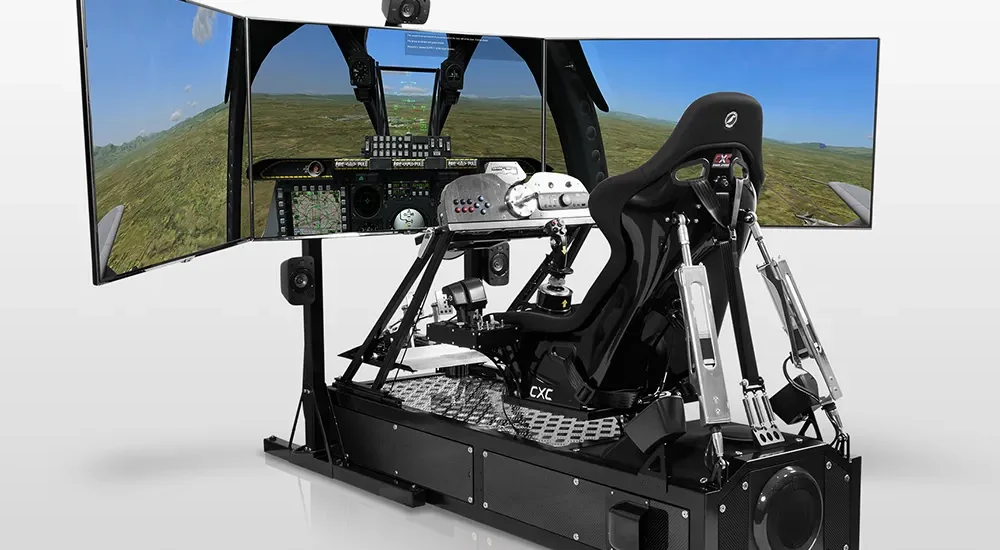The motion simulation market is expected to grow rapidly throughout the projected period, with a CAGR of 10.8%. The market is expected to be worth US$ 20400 million in 2022 and US$ 56750 million in 2032, respectively. Emerging regulatory adjustments, rising defence R&D expenditures by major and developing nations, and widespread adoption of cloud-based simulation software will all contribute to the growth of the motion simulation market over the forecast period.
Rigid body dynamics, another name for motion simulation, provides solutions for the complexity of mechanical products. Motion simulation, in general, gives quantitative data regarding the kinematics, such as velocity, position, and acceleration, as well as the dynamics, such as inertial forces, joint reactions, and power requirements of all the components of a moving mechanism.
Request For Sample @
http://www.futuremarketinsights.com/reports/sample/rep-gb-1851
Additionally, results of the motion simulation can be obtained virtually through CAD assembly model and transferred directly to motion simulation program. Motion Simulation systems are used in various applications, such as defense, aerospace, automotive, mining, healthcare and entertainment
Global Motion Simulation Market: Drivers
Changing regulatory framework in the aviation industry, global adaptation to simulation-based training program across government and private organizations in the aviation industry and expanding demand for modeling and simulation technologies from automotive sector are the factors identified as the key growth drivers of the global motion simulation market during the forecast period.
Growing trend of using motion simulation as cost effective solution in aerospace community, adoption to full-flight simulation modules by aviation training industry and continuous focus on commercializing autonomous vehicle technology in emerging economies, further accelerates the growth of global motion simulation market. Transformation of human motion simulation from the laboratory to the commercial market,
significant development of motion simulation technology in healthcare applications are also expected to fuel the growth of global motion simulation market during the forecast period. However, lack of simulator fidelity and feasibility are identified as the key restraints hindering the growth global motion simulation market during the forecast period.
Request Methodology @
https://www.futuremarketinsights.com/request-report-methodology/rep-gb-1851
Global Motion Simulation Market: Segmentation
Global Motion Simulation Market is segmented on the basis of end user, technology, type, degree of freedom (DOF) and region.
On the basis of end user, the global motion simulation market can be segmented into defense, automotive, entertainment, mining and healthcare. On the basis of technology, the global motion simulation market can be segmented into, hydraulic, electric and pneumatic. By type, the global motion simulation market can be segmented into Hardware and software. On the basis of degree of freedom (DOF), the global motion simulation market can be segmented into two degree of freedom (DOF), three degree of freedom (DOF), and six degree of freedom (DOF).
Regionally, Global Motion Simulation Market can be segmented into North America, Latin America, Western Europe, Eastern Europe, Middle East & Africa (MEA), Asia Pacific excluding Japan (APEJ) and Japan. Among all end user segment, defense segment is identified as the attractive market during the forecast period, due to continuous focus on implementing aircraft and military vehicle simulation technology, to reduce cost and to ensure safety & security.
Global Motion Simulation Market: Regional Outlook
Global motion simulation market is witnessing significant growth in all major regions including North America, Latin America, Western Europe, Eastern Europe, Middle East, Africa and Asia Pacific. Asia pacific market is anticipated to be the fastest growing region in motion simulation market, due to dynamic growth of economies, increasing military capabilities, rising demand for air transportation and modernizing industrial capabilities. However, the North America region is expected to dominate the motion simulation market during the forecast period.
Global Motion Simulation Market: Competition Landscape
The key vendors in the global motion simulation market, include Bosch Rexroth AG, Siemens Industry Software B.V, CAE Inc. Dassault Systèmes, Laerdal Medical., Moog Inc., Gaumard Scientific, and Cubic Corporation. Actuations collaborations with other players in simulation market to expand the product portfolio, is the strategy followed by major market vendors to gain competitive edge.
Key Segments in the Motion Simulation Market
By End User:
- Defence
- Automotive
- Entertainment
- Mining
- Healthcare
By Technology:
- Hydraulic
- Electric
- Pneumatic
By Type:
- Hardware
- Software
By Degree of Freedom (DOF):
- Two Degree of Freedom
- Three Degree of Freedom
- Six Degree of Freedom
About Future Market Insights (FMI)
Future Market Insights, Inc. (ESOMAR certified, Stevie Award – recipient market research organization and a member of Greater New York Chamber of Commerce) provides in-depth insights into governing factors elevating the demand in the market. It discloses opportunities that will favor the market growth in various segments on the basis of Source, Application, Sales Channel and End Use over the next 10-years.
Contact Us:
Future Market Insights Inc.
Christiana Corporate, 200 Continental Drive,
Suite 401, Newark, Delaware – 19713, USA
T: +1-845-579-5705
For Sales Enquiries: sales@futuremarketinsights.com
Website: https://www.futuremarketinsights.com
LinkedIn| Twitter| Blogs | YouTube





